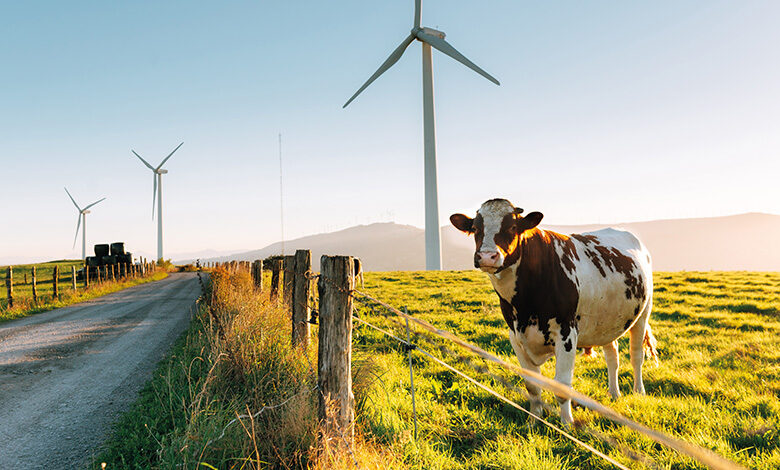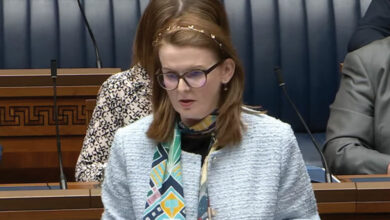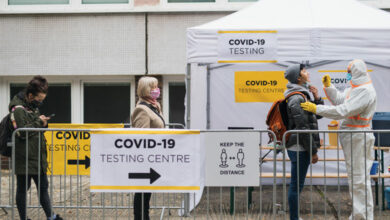‘Radical action’ still not enough for net zero

Northern Ireland’s policy ambition “must change” if net zero emissions are to be reached by 2050, the Climate Change Committee (CCC) has stated, with “radical actions” such as rapid afforestation and carbon capture and storage still not enough to reach a 100 per cent reduction on 1990 emission levels.
Since the signing into law of the Climate Change Act (Northern Ireland) 2022, the achievement of net zero emissions by 2050 has been a legally binding target for the Executive, an aim which went “significantly beyond the CCC’s advice on what would be a fair and achievable contribution” towards UK net zero ambitions. In its new report, the CCC states that its updated Balanced Pathway, containing actions within Northern Ireland “consistent with UK net zero by 2050”, would only reach an 83 per cent reduction by 2050 in Northern Ireland’s emissions, despite it being “very ambitious, with most sectors decarbonising almost completely”.
Under a second scenario developed by the CCC – the so-called ‘stretch ambition’ – a 93 per cent reduction could be reached by 2050 through the adoption of actions such as the “rapid ramp up” of afforestation rates to reach 3,100 hectares per year by 2035, which would require a multiplication of the 2021/2022 rate by six, and engineered removals of emissions via carbon capture and storage (CCS), which “would require significant investment and infrastructure development”.
A third, “speculative” scenario is thus developed by the CCC, with two pathways suggested to make up the residual emissions: the first pathway would see the deployment of direct air capture (DAC) technology, “which is expected to have high costs and may be difficult to deliver at scale in time”, in order to take CO2 directly out of the atmosphere; and the second would see livestock numbers approximately halved by 2050, which would go significantly beyond the recommendation of less than one-third in the Balanced Pathway.
Agriculture
Agriculture remains the key determinant sector in Northern Ireland’s pursuit of net zero by 2050, with the residual emissions in the two scenarios that do not reach net zero coming from the sector, and the reaching of net zero in the third scenario requiring radical action within the sector. Emissions in the sector stood at 6 MtCO2e in 2020, up 6 per cent since 2010, but will need to fall by 21 per cent from this level by 2030 under the stretch ambition scenario that would achieve 93 per cent reduction of total emissions from 1990 levels. The main source of agricultural emissions in Northern Ireland is livestock, and the stretch ambition scenario would require total livestock numbers to fall by 12 per cent by 2030.
The speculative scenario, under which net zero emissions could be reached by 2050, would see the number of livestock halved by 2050; at the least. The CCC says its pathway rests on a reduction of dairy cattle by 22 per cent, beef cattle by 17 per cent, and sheep by 18 per cent by 2030. However, the latest agriculture census published by the Department of Agriculture, Environment and Rural Affairs (DAERA) found livestock dairy cow numbers to have fallen by 1 per cent in 2022, beef cow numbers to have fallen by less than 1 per cent and sheep numbers to have risen by 3 per cent.
“Current action and deployment rates are insufficient across all sectors of the economy and rapid ramp up needs to start now.”
Carbon budgets
Advising that decarbonisation action must begin immediately as Northern Ireland is now in its first carbon budget period, the CCC states that “current action and deployment rates are insufficient across all sectors of the economy and rapid ramp up needs to start now”. It is thus recommended that that following target levels be set for the first three carbon budgets:
- a 33 per cent reduction from 1990 levels from 2023-2027;
- a 48 per cent reduction from 2028-2032; and
- a 62 per cent reduction from 2033-2037.
Interim targets for 2030 and 2040 should be set at 48 per cent and 77 per cent respectively, the CCC advises.
Significantly, the CCC also states that due to the “extremely stretching nature of Northern Ireland’s legislated net zero target” going beyond net zero across the UK measures, carbon credits should not be used. The use of such credits would pose several risks, the CCC says, such as: Impairing the clarity of sectoral actions; substituting domestic effort with purchased reductions from outside Northern Ireland; and sending an international signal that the net zero target set would be undermined by the use of credits.
The CCC states that a number of near-term actions need to begin immediately, such as: the deployment at scale of renewable electricity generation, “substantial investment to expand the elective vehicle charging infrastructure” and “major scale-up of plug-in vehicles’ share of new car sales from the current 10 per cent to 100 per cent” by 2032; all homes off-gas grid and on-gas grid having zero-carbon heating installed by 2030 and 2033 respectively; all industry cutting fossil fuel use by 45 per cent by 2030; low-carbon farming practices be adopted alongside the livestock reductions; all low-yielding trees to be removed from peat soils by 2030 and all extraction sites to be restored by 2035; and tree-planting rates to increase from 226 hectares per year to 1,000 by 2024 and 3,100 by 2035.
For Northern Ireland to meet the advised carbon budget targets, average annual emissions are required to be 19 per cent below 2019 levels by 2025, and 35 per cent lower by 2030. This compares with a reduction average of 9 per cent per decade over the period 1990-2020, lending further credence to the CCC’s statement that this work “must begin immediately”.





